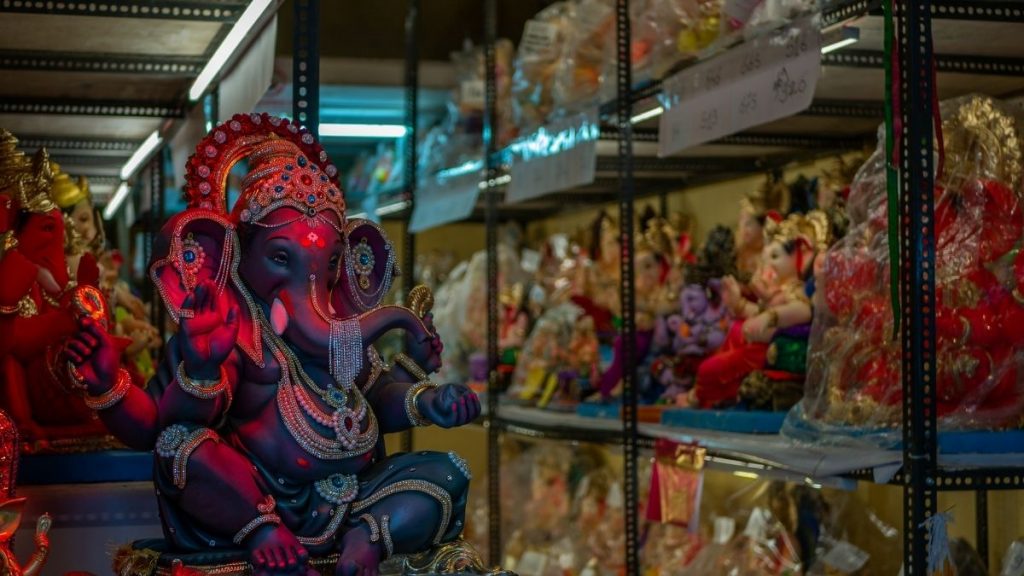
Lord Vinayaka, Ganeshji, Ganapathi, Vinayakar is the darling of the masses. Lord Shiva is the feared one, Lord Vishnu is the Revered one, but Lord Ganesha is the Loved one. It is popularly known to bring people of all religions, caste, and creeds together.
Ganesh Chaturthi is marked by various cultural events, brotherhood, getting together for artis, pooja, numerous religious functions, and the general atmosphere is marked by grand festivities. Sweets, sweetmeat, delicious preparations, hurried and hectic kitchen activity is the hallmark of the 10 days. In various parts of the country, it is referred to as – “Ganpati Basla” (in Marathi it means- One has seated the Lord at home).
Rituals of Ganesh Chaturthi
On this auspicious day, devotees take a ritual bath, wear new clothes and get ready to perform the Vinayaka Chaturthi puja. Then, the beautiful clay idol of Lord Ganesha is brought to the house and pandal with the face of the idol covered with a saffron cloth. After this, the idol is placed properly on the makhar in the houses and pandals. The idol is then beautified with fresh flower garlands and sandalwood paste. Before invoking Lord Ganesha, a Kalash i.e. the earthen or brass pot filled with holy water is established with the rice kept down the Kalash. This is called Purna Kumbha Kalasha Sthapana. After this ritual, the holy ritual called Pranapratishtha is done to invoke life into the idol of Lord Ganesha with the chanting of the consecrated mantras. This ritual is followed by another known as Shhodashopachara i.e. 16 ways of worship.
All the favorites of Ganesha- Hibiscus, modak, laddoo, Dhruva, mooshak
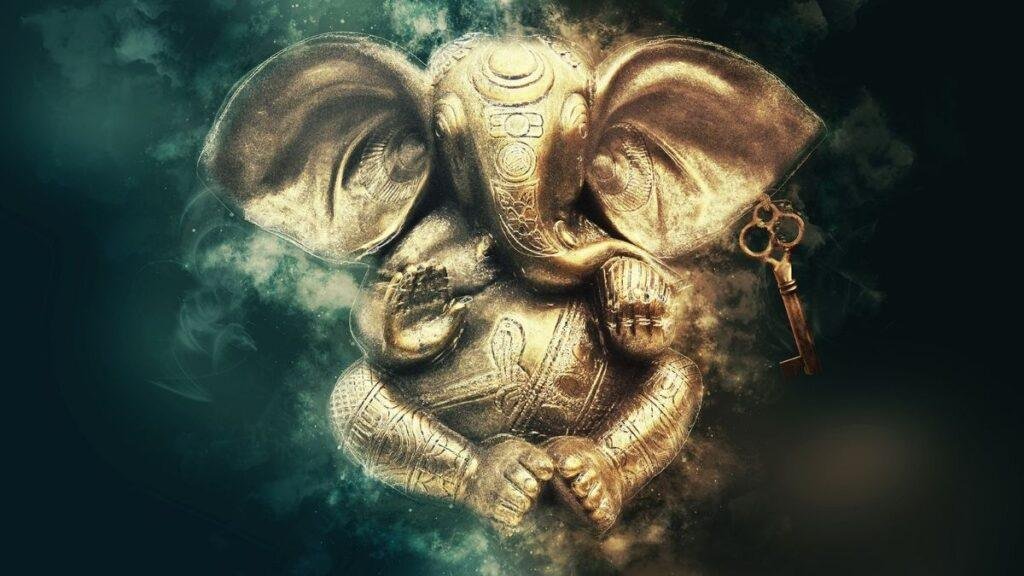
How to do Pooja of Lord Ganesha on Vinayaka Chaturthi
Hindu Rituals involve the Pancha/Five Upacharas/offerings. They are namely;
- Gandham (Fragrance) in the form of white or red Sandalwood paste,
- Dhupam (Lighting of Incense Sticks),
- Deepam (Lighting of Oilor ghee Lamps)
- Naivedyam(Sanctified Offerings of fruits, sweetmeats, etc.) and. Modak and Motichoor Ladoos
- Pushpam (Pushpa-Flowers). The Hibiscus or the Shoe flower is a favorite of the Lord. Dhurva Grass malas are also quite popular.
Important Customs and Rituals
This festival lasts for ten days and the preparations begin two to three months prior to Ganesh Chaturthi. The traditions and customs are observed not only in India but also in countries like United States, Mauritius, Nepal, China, etc. Ganesh Chaturthi is celebrated by following a number of traditional customs and rituals, two of which are listed below.
Topikaranam for Ganesha- Shuklam Varadhanam Vishnu
One important ritual of praying to Ganesha is the “Topikarna” or the “Topikarnam or Toppukranam“, wherein the devotee cross holds the lobes of his ears in front of the Lord, half sits for 3 times (like the Bharatnatyam dancer), and then tugs at his ears by holding the tip of both the ears with his thumb and forefinger of his hands in a scissor-like fashion and repeat the action of squatting and standing. Ganesha is believed to grant boons to anyone who does this.
“Topikaranam’ means “Thwabhyam Karna” in Sanskrit ” – I listen to your Command, Oh Lord Ganesha’. One must then prostate completely with chest touching ground and legs outstretched.
This means that the tugging of the lobes is the asking for forgiveness from the Lord for misgivings and ill deeds done knowingly or unknowingly. Generally, the men and male kids of South India practice the toppukarna.
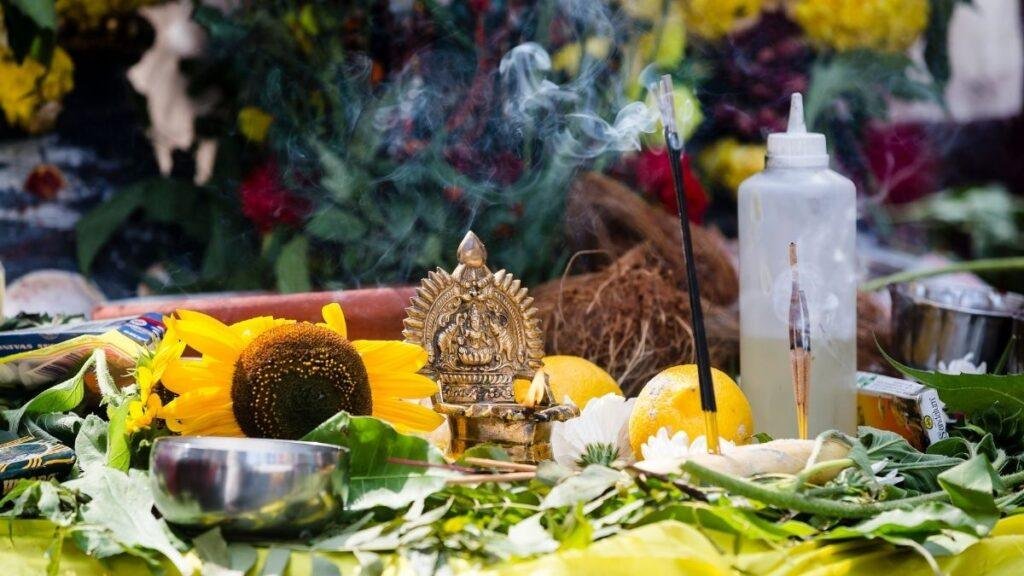
Coconut for Vinayaka Chaturthi
Before beginning any pooja, these materials should be kept handy. Take a bath, cleanse yourself and then stand with folded hands in front of the deity and offer all the above. Wet whole coconut (peeled off the exterior husk) but with a small stalk of husk on the top symbolizes the Bramhin or purest offering to the Lord.
Breaking of this coconut or the act of “Chadur Thenga” means that we smash our egos in front of the Lord and submit our soft white inner self at his feet.
Shubha Drishti Ganpati is an all-powerful glorious divine form brought into being with the unique, powerful blessings of Sage Agastya, the foremost among the eighteen Siddhars.
What items are favorites of the Lord
- Modak: The Lord Ganapathy has a special liking for the sweet dumplings- Modak/Kozhukattai and Laddoo. Ganesha’s mother Parvati made a tasty modak for her son, hence he is especially fond of them. Read here how to make home-made modaks.
- Durva: (Three-blade grass, Trefoil) is also offered to Ganesh. There are many interesting facts relating to why Durva is offered. Once Ganesha destroyed a demon called ‘Analan‘, by swallowing him. The demon went inside and burnt the 14 worlds situated inside Ganesha, thus causing enormous heat. Ganesha searched for Doorva Grass and wore it as a garland to nullify the heat inside. Doorva is a substance known to create heat and by the principles of two negatives make things positive, the heat was quenched.Doorva/Dhurva Grass is therefore used as a supreme offering in Ganesha Puja. Make a dhurva garland by combining several dhurvas together and tying them in a mala/garland for the Lord.
- Shoe flower/Hibiscus: Fist of all, the red color of the flower is a personal favorite of the Lord and then the 5 petals of the Hibiscus denote the warding off negative energy and the welcome of the positive energy into the Universe. On a more practical level, it is the seasonal flower of the Bhadrapad month of the monsoons, hence our ancients have advocated this particular flower. Especially the color red is highly auspicious.

Rules to pluck flowers and offer to the Lord:
- Always pluck flowers only after your bath.
- Do not pick flowers fallen on the ground(except Parijat).
- Don’t offer Nirmalya (re-used flowers), flowers that have already been offered by others.
- Do not throw/fling flowers on the idol. Offer them with both your open palms at his feet.
- What it the Angaaraka Ganesh Chathurthi
- The fourth thithi of each moon phase is known as Chathurthi. Chathur = four. 24 to 25 Chathurthis occur each year. When the Chathurthi thithi occurs on a Tuesday, it’s known asAngaaraka Chathurthi in recognition of Sri Angaaraka, the Vaara(weekly- Mars-Chevvaai-Mangal) devata for Tuesday who performed special pooja for Lord Ganesh.
Ganesha Stuti (Praises to the Lord Ganesha)
Agajanana padmarkam gajananam aharnisham Anek dantham bhaktanam yekadantham upasmaheth ||1||
Vakratunda mahakaya koti surya samarprabha Nirvignam kurume deva sarvakareyeshu sarvada ||2||
Pranamya shirasa devam gouri puthram vinayakam Bhakthavasam smarenithyam aayuhkaamartha sidhaye ||3||
Gajananam bhootha ganadhi sevitham Kapitha jambo phala sara bhakshitam ||4||
Umasutham shokha vinashkaranam Namami vigneshwara pada pankajam ||5||

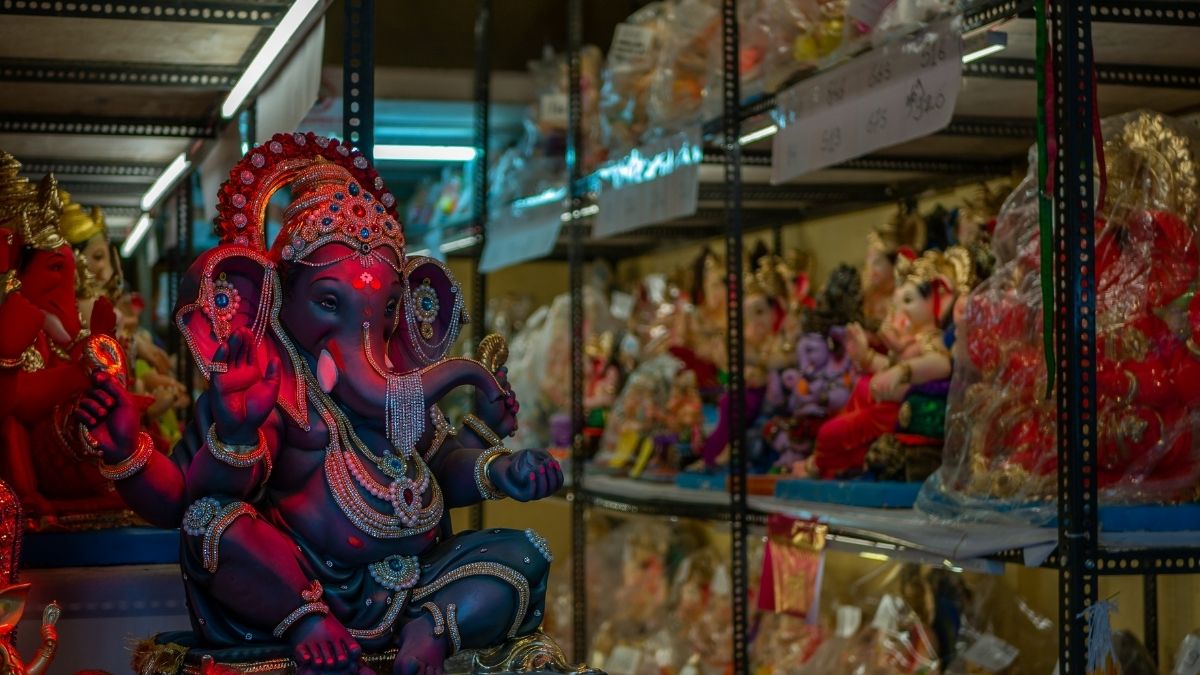

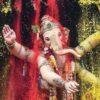




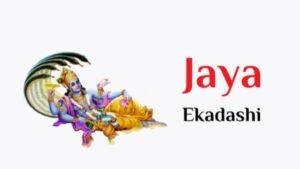









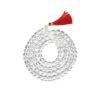
Add comment